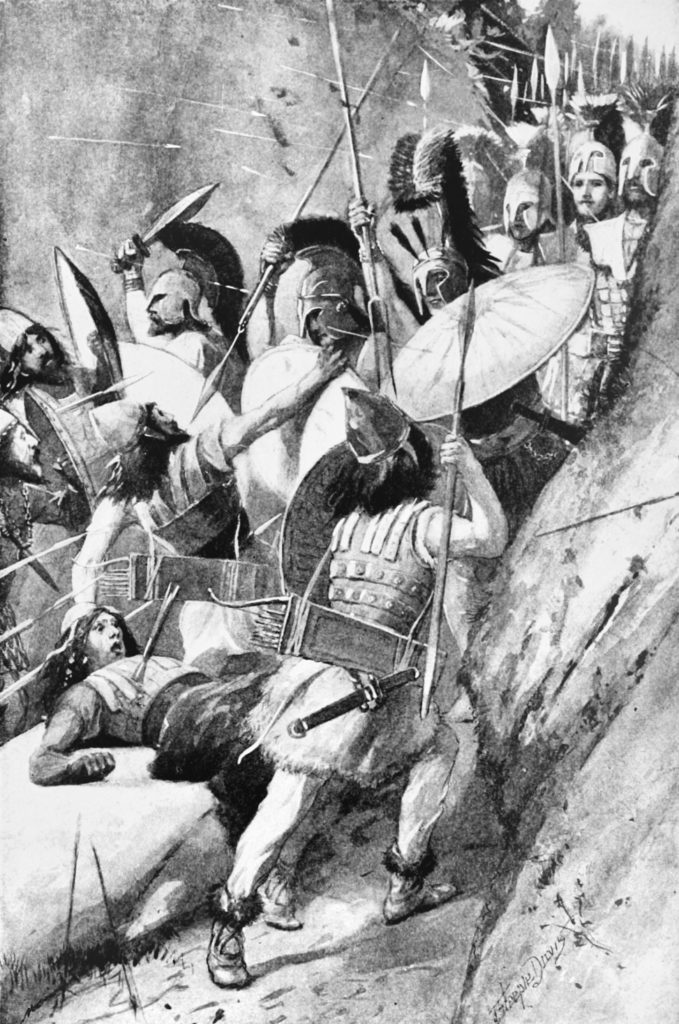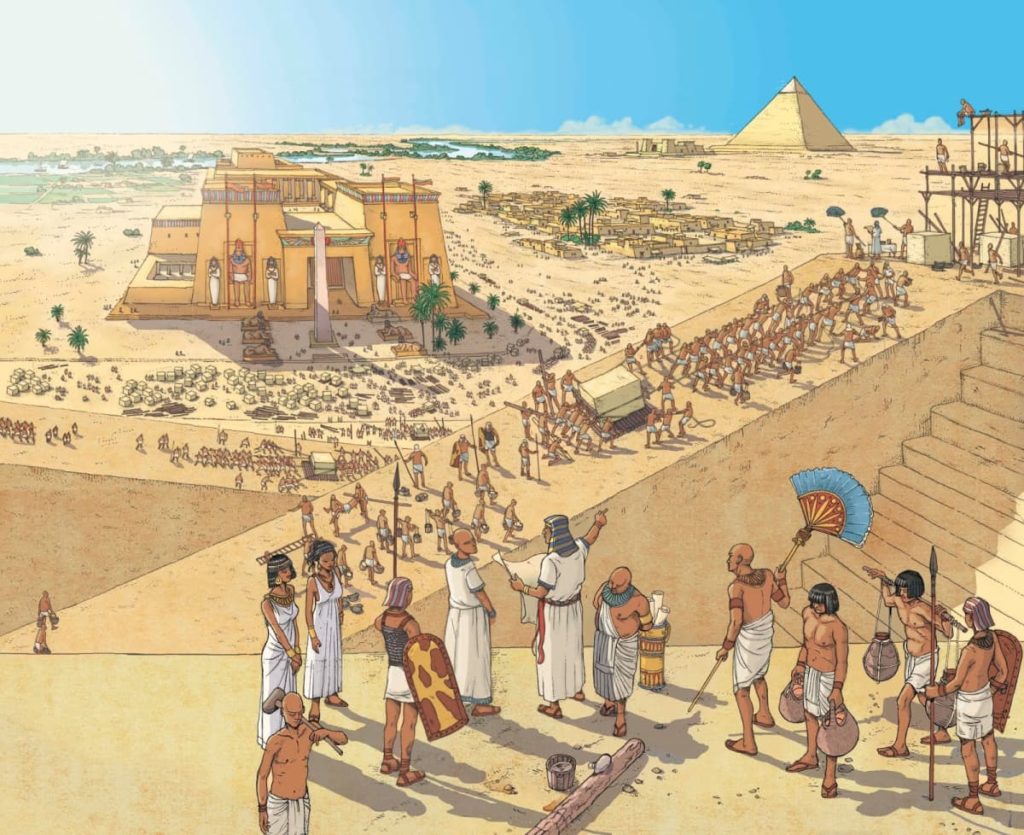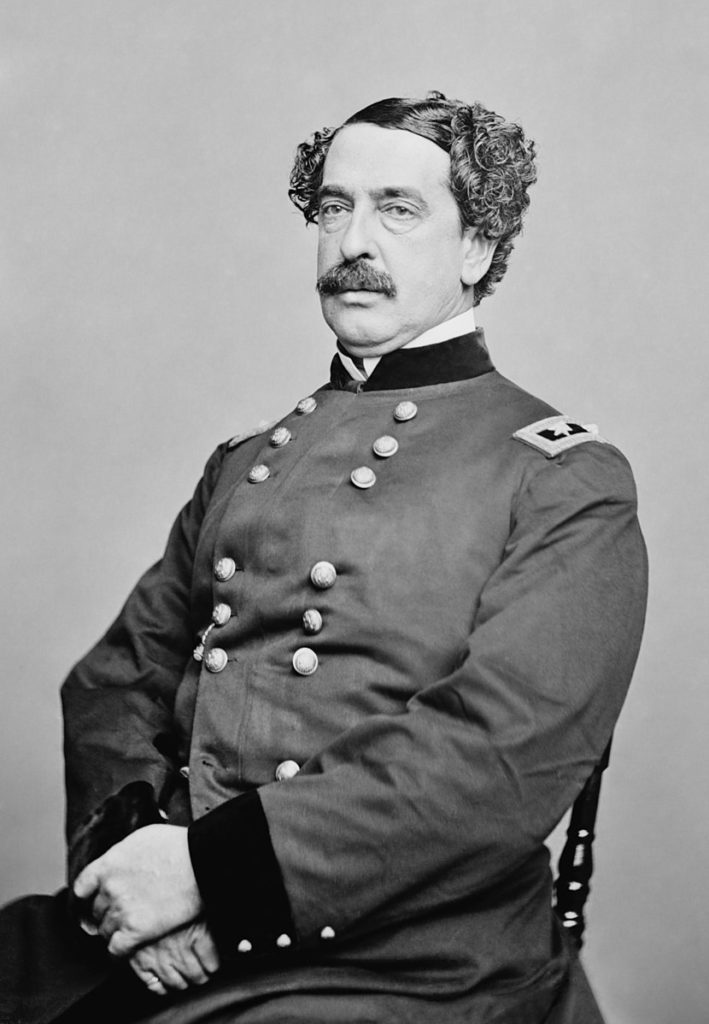Last updated on March 8th, 2023 at 06:11 am
What’s a story without a little buzz, humor, and hyperbole?
This probably explains why many common stories passed down through generations survive on some form of twist – or exaggeration – to survive and command some fanfare.
To a large extent, Hollywood, history teachers, and the media are the chief perpetrators of these stories.
But in this article, we’ll be setting the record straight – 15 historical stories that aren’t true.
In the Battle of Thermopylae, 300 Spartans Warriors Defended Against 10,000 Persians
Spread by Zack Synder’s ‘300’ film, the story is told that in 480 BC, Sparta was celebrating a week-long festival of ‘Carnea’ as a tribute to Apollo Karneois, the Greek god of herds and flocks.
In paying homage to this god, worshippers were forbidden to participate in any form of war; otherwise, they would have ruined their food source for the following year.

This tradition was piously preserved, except in the year in question, news traveled that Xerxes I, King of Persia, was coming to avenge his father’s death after his failed attempt to invade Greece 10 years ago.
As the festival was much in season, Leonidas, King of Sparta, could only gather 300 guards to defend against the Persian army.
A point often re-echoed is that other Greek city-states mustered up 4,000 soldiers to wade off this intrusion. But as compelling as this too may sound, it is, however, a myth. About 100,000 to 150,000 Greek soldiers joined the face-off.
Leonidas’s soldiers fought bravely and defended themselves for three days until they were betrayed by a countryman who snitched on them and revealed a backroad down the mountains – a strategic front for the Spartan army. It was at this point that Leonidas and his army were slain.
Not 300, as most accounts claim, but 1500 soldiers.
Jewish Slaves Built the Egyptian Pyramids
As Professor Amahai Mazar of the Hebrew University of Jerusalem reported, this myth arose from a speech presented by Menachem Begin, former Israeli Prime Minister, when he visited Egypt in 1977.
According to Deiter Wildung, former Director Berlin Museum, the myth was sold for a long time, perpetuated by Hollywood and the media, mainly because it was virtually difficult to stomach the fact that such magnificent pyramids were built without forced labor or oppression.

So the myth traveled far on the back of sentiments that slaves were generally deployed for such projects as building pyramids.
Meanwhile, Deiter points out the pyramids were built out of loyalty to the pharaohs – a claim that recent archaeological findings have corroborated. However, Professor Mazar laid the issue to rest when he pointed out that Jews did not exist within the period the pyramids were built.
King Tutankhamun’s Tomb is Cursed
King Tutankhamun’s tomb is said to be mystically deadly to persons who break into his tomb. So, when an Earl from England named George Herbert helped Howard Carter rob tombs in Egypt and died shortly after, newspapers waded into the story and puffed out the narrative that Herbert died from a curse.

Since then, the curse of the Pharaohs became a mainstream flash story.
But here’s the truth.
The Earl had suffered from poor health for about two decades and died from pneumonia five months after he first stepped into the tombs.
Or perhaps, the curse waited five months.
Cleopatra was an Egyptian
Cleopatra hailed from the Ptolemaic dynasty, a Greek family that ruled Egypt after the reign of Alexander the Great. She was the first to learn Egyptian, as her family had initially refused to learn the language.

If you studied history books, you probably would think of Cleopatra as an Egyptian, mainly due to how she conducted herself publicly as the reincarnation of Isis, the Egyptian goddess equivalent of Venus and Aphrodite. But she is not.
Vikings Wore Horned Helmets
The popular belief that Vikings wore horned helmets dates back to the early 19th century when Gustav Malmströmstems, a Swedish artist, included the imagery of burly men Viking warriors marching to war with horns in one of his best-selling works. This was further spread by Wagner’s operas in the mid-1800s, where Viking warriors were robed in horned helmets.

However, archeological evidence supports the contrary. According to the History Channel, findings from death sites reveal that Viking Warriors strode to battle bare-headed, and in some cases, wore leather headgear.
Napoleon Bonaparte was Short
Napoleon earned the name “Le Petit Caporal,” meaning “Little Corporal,” out of his soldiers’ affection for him. But Napoleon wasn’t as short as we may think.
Going by pre-French Revolution units, Napoleon stretched as far as 5 feet 2 inches; by US measurements, he would be about 5 feet 6 inches tall. That’s four inches shy of the average male height in France, which stands at 5 feet 10 inches, according to World Data.
The Romans Had a Special Building to Vomit
The myth is that there is a place in Ancient Rome called vomitorium where the Roman elite would stuff themselves with fine delicacies until they felt like vomiting in an ancient buffet.
Dinner guests were believed to shove a feather down their throat so they could vomit, empty their stomachs and eat some more.
This is remarkably disturbing if you’re a food lover, but the real story may be less perturbing.
Vomitorium is a Latin word derived from “vomo,” meaning “to spew out,” which may have given it away. However, the truth is that a vomitorium is an exit or entrance of a large architectural structure where people can traverse different building areas.
Christopher Columbus Discovered America
Starting in 1492, Christopher Columbus embarked on four different trips and landed on various Caribbean Islands – now known as the Bahamas – an Island called Hispaniola.
True – Columbus explored South and Central American coasts but didn’t reach North America, which Native Americans had already inhabited. If you ask him, Columbus would never say he had found a new continent.

Norse Explorer Leif Erikson is believed to have reached Canada about 500 years before Christopher Columbus was born. Also, Phoenician sailors had likely crossed the Atlantic decades before this time.
So, the US can celebrate Columbus Day every year, but that’s as far as the pomp goes.
He did not discover America.
Albert Einstein Failed Math
Life coaches and motivational speakers often peddle this claim to inspire determination and excellence. This myth was particularly amplified by rumors in Ripley’s “Believe It Or Not,” where Einstein was said to fail at solving an equation.
However, the claim that Einstein failed at math is false and misleading.
From a young age, Einstein had always excelled at math. According to Walter Isaacson in his book “Einstein: His Life And Universe,” Einstein gave a concise response to Ripley, stating that he had never failed in mathematics and that he had mastered differential and integral calculus at age 15.

And this is something we can verify. After all, Einstein’s matriculation certificate at age 17 shows he scored the highest marks in Geometry and Algebra.
No doubt, it was Ripley who missed the mark.
The Spanish Influenza Originated in Spain
Spanish Flu, a.k.a. the Three-day Flu, killed approximately 50 million people in 1918 – more than twice the estimated number of casualties in World War I.
But here’s the logic behind the myth.

Spain was one of the first and most hit countries severely ravaged by the Flu, so much so that the King of Spain was not left out of the toll.
To date, there is no certainty as to the origin, but John Barry, relying on available evidence, suggested that the first case of the Spanish Flu can be traced to Haskell County, Kansas.
Jesus Christ was born on December 25
The belief that Jesus was born on December 25 is a myth that has existed for centuries. The myth stemmed from the winter solstice celebrated by the Romans from 17th to 25th December. This festival featured family time and the exchange of gifts.
In the 4th century, Roman Emperor Constantine converted to Christianity and appropriated this traditional Roman holiday as a parallel holiday for the Christian church to commemorate the birth of Jesus. To date, there are no records to show that Jesus was born on the said date or a specific date in the Jewish calendar.

Soon, the St. Nicolas feast was assimilated into the festivities, and December 25, St. Nicolas’ famous day to distribute gifts, was adopted to celebrate Christmas. This made sense, considering Easter already had a holiday, and it was only proper to choose a specific day to celebrate Christmas.
But Jesus Christ was not born on December 25. Scholars generally believe that the historical Jesus Christ was born between 6 and 3 BC, somewhere between spring and fall.
George Washington Had Wooden Teeth
George Washington wasn’t so fortunate in terms of dentition. On many occasions, he was sighted with different sets of dentures during his lifetime – from lead to ivory and lead. However, according to an agency that runs his estate, Mount Vernon, Washington never used wooden teeth.

There’s a high chance that Washington’s favorite burgundy-colored drink had stained his teeth so much that they appeared like wood – grainy and brown.
Abner Doubleday Invented Baseball
In 1907, the Mills Commission was charged with the duty to determine the origin of baseball.
The commission headed by Abraham Mills, then-President of the National Baseball League, ruled that Abner Doubleday, a war general, invented baseball in a town called Cooperstown, New York, in 1839. It was found that the National Baseball Hall of Fame and Museum was situated at Cooperstown.

However, George B. Kirsch, a history professor at Manhattan College, wrote in his book “Baseball And Blue In Gray: The national pastime during the Civil War,” that scholars have adduced evidence to show that Doubleday lived at West Point in 1839 and not Cooperstown.
Maybe this doesn’t expressly rebut this incongruence of Mill’s claims, but there were no notes, papers, or letters from Doubleday about his role in the origin of baseball.
Wall Streeters Jumped to their Deaths After the 1929 Market Crash
These rumors started when comedians cracked jokes about the economic meltdown preceding the Great Depression. For one, according to Slate, Will Rogers once joked that Wall Streeters had to queue to jump out of a window. New York Times and its chief medical examiner tried to clear the air, but the joke had spread too far.

Now, here’s what happened.
According to Slate, four suicides were linked to the series of market plunges that led up to the Great Depression, and only two occurred on Wall Street.
The Head of Rochester Gas and Electric and the president of County Trust Co. did indeed kill themselves, but they didn’t jump off a window. Medical evidence shows they used guns—just two of them.
A Cow Kicked Over a Lantern and Caused the Great Chicago Fire
The Chicago fire killed and burned hundreds, covering over 3 square miles in 1871. The blaze started in a small alley for reasons unknown to date.

However, in the spirit of comic relief, a journalist attributed the fire outbreak to one of Mrs. Leary’s cows knocking over a lantern. However, the same journalist admitted it was a mere embellishment that should be taken with a pinch of salt.
Bottom Line
At this juncture, we can agree that Hollywood and the media owe a moral duty to tell stories as they are. From world politics to business, sports and religion, there is a large body of myths retold through the ages and flavored with varying degrees of modification. However, historical accounts carry strong cultural and thematic relevance in today’s world and should be told as accurately as possible.

